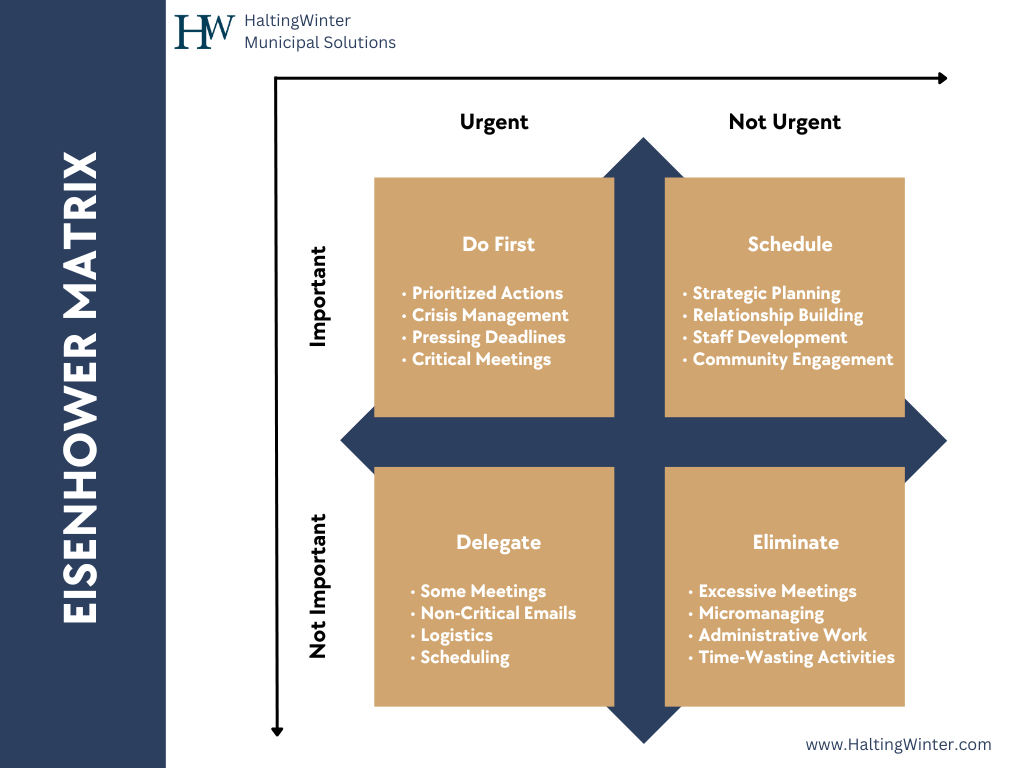Municipal Leaders: Develop Faster, Lead Stronger, Build Better

Every week, you’ll get insights and actionable steps to help you navigate personal growth and professional success.

In our previous post, we explored the power of saying ‘no’ and how it can revolutionize your leadership as a city manager. Today, we’re diving deeper into the concept of Essentialism by focusing on a critical question: What is your highest point of contribution?
As city managers, you’re tasked with overseeing numerous departments, projects, and initiatives. It’s easy to fall into the trap of trying to be everywhere and do everything. However, true leadership isn’t about being all things to all people. It’s about identifying where you can make the most significant impact and focusing your energy there.
Your highest point of contribution is the intersection of your unique skills, your city’s most pressing needs, and the strategic goals that will drive your community forward. It’s where you can add value that no one else can.
Focusing on your highest point of contribution isn’t always easy. You might face resistance from those accustomed to your involvement in every decision. You may struggle with delegating tasks you’ve always handled. Here are some strategies to overcome these obstacles:
When you analyze and assess your past and present and discover your highest point of contribution, you’ll notice a few key realities:
Find your highest point of contribution and lean into it hard, saying no to as much as possible outside of it and yes to more of what you love and are good at. This approach not only benefits you as a leader but also creates a more engaged, empowered, and effective team around you.
Identifying and pursuing your highest point of contribution is a continuous process. It requires self-reflection, strategic thinking, and the courage to focus on what truly matters. By doing so, you’ll not only become a more effective leader but also drive significant, lasting change in your community.
In our next post, we’ll explore how to remove obstacles and distractions, allowing you to spend more time in your areas of highest contribution. Until then, we encourage you to reflect on your unique strengths and how they align with your city’s needs. Where can you make the most significant impact?
Remember, true leadership isn’t about doing everything – it’s about doing the right things exceptionally well.
Seth Winterhalter is President of HaltingWinter Municipal Solutions, dedicated to making stronger cities through stronger leaders. Through executive coaching, consulting, and the Municipal Leadership Development Circle (MLDC), HaltingWinter helps city managers and municipal leaders transform their leadership impact and their organizational culture.
